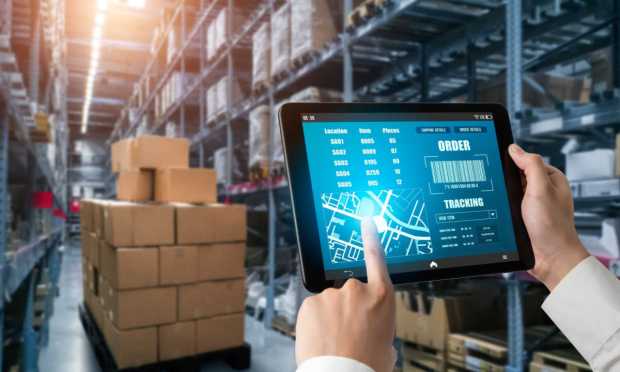Modernizing the Smokestack Economy With BNPL and Industrial Marketplaces

The process of getting rid of paper invoices and checks may not be new, but the drive to solve this old problem is generating some new thinking — especially when it comes to the transformation of big, old, dirty industries.
That creativity is bringing some of the oldest of old school firms, which belong to the smokestack economy, online.
“The consumer world has been completely transformed over the last 15 years. However, if you turn to the business sector, B2B payments are still stuck somewhere in the 90s,” Matthias Knecht, co-founder and co-CEO of B2B BNPL FinTech Billie, told PYMNTS earlier this year, reflecting on an efficiency-drive hunger for change that has only accelerated as the economic clouds have darkened throughout the year.
It’s no surprise, then, that the digitization of B2B has been moving well beyond simply automating payables and receivables. The opportunity here is enormous: One oft-quoted estimation of market size comes from Visa at $120 trillion.
As for the creativity: The guiding principle is the experience between the parties — the vendors and the producers and the resellers. No longer is B2B mired in the ways it’s always been done. Instead there’s a nod, with digital channels, to move toward the ways it should be done.
The experience needs to be as intuitive as the ones where we hop onto Amazon to find, order and pay for an item, knowing exactly when the delivery will be hitting the doorstep.
We’re not quite there in all of B2B — it’s not a monolithic construct — but we’re moving in that direction, as can be seen within several verticals.
The Rise of Industrial Marketplaces
For example, B2B marketplace platforms such as ChemDirect allow smoother transactions and enable buyers and sellers to broaden their own networks, while also reducing the back-and-forth emails typically involved in sourcing inventory and tracking deliveries.
The online marketplace models also can handle some of the back and forth that actually goes on in determining price discovering and settling on terms. Bryzos, an online marketplace focused on the steel industry, handles negotiations and disputes among the third-party buyers and sellers that populate its platform.
“If the steps are not choreographed or sequenced properly, you end up just doing the same things over again, and the more time we can get a business looking in front of their business versus sweeping up what’s behind them, the more efficient they’re going to be as an enterprise,” Bryzos CEO Shep Hickey told PYMNTS in an interview.
Elsewhere, Nivoda has created an online marketplace to bring diamond buyers and sellers together, offering a channel through which manufacturers find retailers, who in turn serve consumers.
Even construction — an enormously labor intensive industry that’s dependent on heavy equipment — is getting a 21st century boost from customer-centric platform approaches to better balance supply and demand via DOZR, which is bringing in new BNPL capabilities.
DOZR CEO and Co-founder Kevin Forestell told PMYNTS’ Karen Webster that the B2B BNPL solution on its platform works much like its consumer counterpart, where buyers are underwritten and extended credit and terms within five minutes. Suppliers get paid immediately, and terms for the buyer extend to 60 days. The digital transformation of logistics, as well as the links in the supply chain that connect everything to the warehouses and storefronts, is also taken from the pages of consumer playbooks.
Not to be left out, logistics platforms, including Freightos, are enabling exporters, importers, freight forwarders and carriers to make real-time decisions about bookings and agree on pricing.
In a recent panel discussion, SmartHop Co-founder and CEO Guillermo Garcia and Fluid Truck Co-founder and CEO James Eberhard said data and embedded payments will continue to transform logistics, as smaller trucking firms can optimize loading and dispatch activities while boosting margins.
Paying for It All
Taken collectively, these online marketplaces meld fragmented, often global industries, where producers, distributors and wholesalers are decidedly brick and mortar, and would traditionally have relied on word of mouth, trade shows, e-mails, (paper) directories to find one another.
Today, platforms are increasingly the place where on-the-spot payment terms are offered to suppliers, without the friction points of contending with FX rates.
To that end, Nivoda and its MarketFinance credit facility will also help suppliers to transact with buyers in their currency of choice. Similarly, wholesale management platform JOOR has unveiled a tool for fashion wholesalers called JOOR Pay, geared toward for small- to medium-sized businesses (SMBs) that want to operate cross-border.
Taken together, the streamlining of the back office functions that allow buyers and sellers to “talk” to one another — more specifically, through their payables/receivables operations — is firmly within the sights of financial institutions (FIs).
A Drop in the Ocean
PYMNTS research has found that 90% of Fls with more than $100 billion in assets are planning to develop in-house solutions to reduce B2B payments friction. At the same time, 42% of credit unions said they were currently innovating embedded finance solutions or had plans to do so in the near future. Even Visa has taken note, reporting in its latest earnings call that commercial volumes were up 27% from a year ago and 45% since 2019 as B2B payments volumes continue to rise.
BNPL is increasingly finding some traction in B2B, as evidenced by the efforts of startups such as Credit Key, Hokodo and Mondu.
